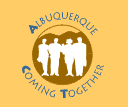|
UNIFICATION CHARTER COMMISSION CITY OF ALBUQUERQUE-BERNALILLO
COUNTY PUBLIC FORUM
January 11, 2003
City Hall Council Chambers
PRESENTATION BY TANIS SALANT
Institute for Local Government, The University of Arizona
Chairman Padilla and Members of the Unification Charter Commission:
I chose local government as my professional focus because local
government is so very real, and what it does impacts citizens so
quickly. It is the most significant and most important level of
government on a day-to-day basis. Who runs for office, who gets
elected, who they appoint, and how they all govern impacts the quality
of our lives much more than actions of any other level.
I like what Alexis de Tocqueville observed in 1848, when he came
to America to study democracy:
The strength of free peoples resides in the local community.
Local institutions are to liberty what primary schools are to
science; they put it within the people’s reach, they teach
people to appreciate its peaceful enjoyment and accustom them
to make use of it.
It’s hard to understand why we don’t routinely teach
local government beginning in elementary school, but that is the
case in almost all states. So, the task of the Unification Charter
Committee to create a brand new local government will certainly
be one of the most meaningful activities you will ever do in your
lifetime. Very few people have this golden opportunity to help shape
civic life and guide a new government into the future, and I envy
you!
The form of a local government tells us how citizens organize themselves
to realize joint aspirations and to provide for joint gains. By
creating a new government that reaches to the county borders, you
are, as commission members, involved in enhancing the quality of
life for all county residents of this new government.
The value of any system of government depends on how its different
units are related to each other and how well they serve the interests
of citizens and constituents. Government does much more than tax
and spend. It serves to realize the fundamental values of human
community, and you will be defining, through this new charter, what
the fundamental role of "Greater Albuquerque" will be
in your community.
I landed last evening about 5:15 and drove west into town as the
sun was setting. You have the vistas that I’ve come to love
in Tucson, and the sunset gave Albuquerque a particularly Western
hue. New Mexico is a quintessential Western state: large open spaces,
big counties, rugged terrain, sparse population, federal lands and
Indian reservations, small tax bases but nevertheless low property
tax rates, dependency on federal and state aid, boom and bust economies,
and, of course, aridity. The person who wrote so well about the
West was Wallace Stegner, who coincidentally died in New Mexico
in 1985 when he was 85. One of his concepts applies to local government
officials and most certainly to this charter commission (in Sounds
of Mountain Water). That is, your task is to create a society to
match the scenery. In order to do that, you must draft a charter
that is based on community values as well as principles of good
local government.
I met last evening with the staff of the commission and got a sneak
preview of a few drafts of a preamble, and in those drafts I identified
about 18 different community values that could serve as a foundation
for your drafting process. They are:
local self-determination
improve quality of life in urban and rural areas
better representation
effective and efficient government
total citizen participation
harmonious, cooperative public officials
accountable, ethical government
social harmony and cohesion
fair, equitable taxation
equal civil and political rights
shared economic, environmental and cultural prosperity
cultural, rural and historical preservation
enhance uniqueness of area
meet needs of urban and rural citizens
responsible and responsive government
fosters community-wide perspective among public officials
fosters progressive administration
progressive and equitable tax and financial policies
By any measure, Bernalillo County is in the big leagues of county
government. There are 3,043 counties in the U.S. The average per
state is 64, and New Mexico has 33, which is typical of Western
states. Your counties are large. The average size of counties is
400-600 square miles and yours is 1,160. The average population
is 10,000-25,000 and yours is over half a million. Most counties,
except Western counties, are tiny by our standards. (If you ever
fly into Atlanta, you will step into three counties before you leave
the airport.) Bernalillo County also has a property tax rate that
even Western counties would envy. (Mine is nearly four times greater.)
And the fact that the state gives back very little to none of its
revenues to counties and cities makes me wonder how Bernalillo County
does all that it does with such a small revenue stream.
If the new government is created, it will be the 26th largest city
in the country, larger even than Cleveland and New Orleans. According
to David Rusk’s very excellent report on Greater Albuquerque,
as he calls the new government, you would have more open space than
any other city and become the only one with a national wilderness.
The rest of the country will be very interested in the process you
undergo to create that society to match your scenery.
Role of Charter and Role of Charter Commission:
As Tocqueville observed, good local government is not only an end
in itself, delivering better services, but it is also an educational
process of tremendous importance to the nation: it is in cities,
counties and towns that people have to learn the practice of democratic,
responsible self-government. A charter is the basic law that defines
the organization, powers, functions and essential procedures of
the new government. It is the most important single law of any government.
The better the charter, the better the government.
The charter commission is a distinctly American contribution to
the art and practice of local government. It is a body authorized
by law to draft a charter in a sort of constitutional convention.
The commission investigates the existing government (in this case
two) and charter; it studies the experience of local governments
elsewhere, and determines best practices and principles.
If the charter is well written and forward looking, and if the voters
approve it, the commission will have a positive influence for decades
to come as well as serve as a model for other regions in the country.
A charter commission provides an opportunity for local statesmanship
that comes infrequently. The charter that you draft will be a test
of the vision, courage, and statesmanship of the commission. To
accomplish this, the National Civic League’s Guide for Charter
Commissions (p. 7) offers this advice:
1. Take an overview of the entire local government such as few
if any officials or ordinary citizens can;
2. Probe deeply into the procedures and the interrelations of the
different parts of the government to discover weaknesses and defects;
3. Look elsewhere to discover the best practices that might be applied
and adapted;
4. Learn from all its studies how a better government can be arranged;
5. Having decided upon the major elements, set them down in clear,
logical and consistent form as a proposed charter; and
6. Conduct its affairs in such a manner as to win the respect of
the citizens and to educate and stimulate citizen groups and leaders
to get the charter adopted.
Now, to some important aspects of a charter. I’m going to
touch on both content and style.
Content. We have just finished revising the 7th
edition of the National Civic League’s Model City Charter.
Charters are typically divided into nine sections, called articles.
I know that you have legal guidance and have collected various charters
to see how others have drafted them. I will only focus on the parts
of a charter that relate to structure.
You are considering forming a new government from two very different
existing governments. The city of Albuquerque operates under a mayor-council
plan with two professional management teams each serving the mayor
and the council. It has a home rule charter so has declared its
intention to make full use of all powers permitted by the state
of New Mexico. Bernalillo County operates as a very traditional
county—a five-member commission whose members are elected
by district, with a chair who is appointed by other members rather
than elected county-wide. The commission appoints a single manager
who reports to all five. Then, there are four elected department
heads elected county-wide. Called county constitutional officers,
they include sheriff, assessor, treasurer, and county clerk. (The
average number of these officers in counties is seven.) The county
has no home rule charter.
So, you have two very distinct governing structures that you must
reconfigure into a single new body. I’m going to talk about
political leadership and professional leadership and methods of
selection.
Structure matters. It relates to a broader set of attitudes and
values that guide the behavior of officials. So the political values
of a community can be reflected in structure. The choice is between:
1. Unified governing body
2. Separation of powers
Unified ( or integrated): mayor-council-manager
form of government. Mayor is elected countywide as part of the council;
this is a legislative mayor, not an executive one. Mayor and council
together appoint the manager, who serves all.
Separation of powers: mayor is elected countywide
as the chief executive (prepares budget, etc.). Does not sit on
council unless breaking a tie or vetoing. Mayor appoints the manager
(or CAO). May not even attend council meetings.
County constitutional officers: their presence creates a separation
of powers somewhat, except that they only control one department
and do not control their own budget.
To choose, you must get at the role of local government in your
community. Separation of powers form of government was created to
prevent bad things from happening. Unification of powers was created
to make good things happen. Someone at our NCL charter revision
committee meetings remarked that "if the feds or state government
slows down or makes a mistake, you may be inconvenienced; but if
local government makes a mistake, you may die. Smooth functioning
day-to-day is vital to effective local government. Strong political
leadership can occur under both forms, but a mayor and council functioning
as a cohesive team is a better form for creating a long-term vision
with mutually agreed upon goals and operating smoothly.
Council: councils are no longer viewed as trustees
of the government (where ego, agendas and political ambition do
not play roles) who take time out of their careers to serve the
community. They are now more representative of the diversity of
a community to serve their constituents needs rather than pursue
long-term goals. They are a collection of individuals with agendas
focused on their districts ("pot-hole politics").
A legislative mayor elected countywide can be a cohesive influence
on the council, and moderate between service to districts and service
to community as a whole.
Once you choose the political structure, you will move on to the
electoral structure, which is very significant. Councils used to
be small bodies elected at large which appointed the mayor from
within its ranks on a rotating basis. Jurisdictions are too large
and complex and diverse for this type to be effective (or even acceptable
to the Justice Department). The trend is to move to a hybrid system,
a combination of district and at large with staggered, four-year
, nonpartisan terms.
Other option: The Tucson Plan. Candidates are
nominated from their district and the two top vote-getters then
run citywide. Under this plan, council members are beholden to their
constituents and to the whole city.
Partisan/nonpartisan
Communities tend to prefer which ever system they have. The literature
shows that it doesn’t make much difference in terms of governance
and service delivery, but that under nonpartisan, voting tends to
be lighter except in presidential elections. Party affiliation tends
to energize campaigns and get people out to vote.
County constitutional officers: Little research on this. No evidence
exists to suggest that counties are better governed under one form
or the other. Voters tend to get attached to who they vote for,
especially the highly-valued sheriff and prosecutor. However, county
management tends to prefer working with all appointed (and certainly
commissioners do), but all these elected officials also bring political
clout to counties. This is important since the national and state
governments are highly politicized. When 33 sheriffs come en masse
to testify, the legislature will listen. This is a tough call. So,
appointing them may bring more unification but less political clout
as well as alienate voters. Trying to make the sheriff appointed
is often the kiss of death for a charter. But appointment does and
can happen.
Style.
A charter, like a government, is a living organism. It should be
general enough to give officials maximum flexibility in governing
but specific enough to define relationships and roles. It should
contain a preamble, for that expresses the genesis and intent of
the charter. It is also an expression of the governing values which
are to be fostered throughout the main document.
Most charters do not have a preamble or they have one that is a
copy of others and is virtually meaningless. Some get flowery and
reflect the personalities of the drafters. Some are written by lawyers.
Here is an example of each:
In order to..."bring life to the meaning of the Indian word
‘Clallam,’ that is ‘strong people,’ and
to establish a government closer to the people that will be: competent
to manage the city’s resources wisely, able to accept the
benefits and responsibilities of local control, and be open to
all views and responsive to the needs of the citizens...."
We, the people of the city of Phoenix, a city incorporated under
the name and style of "The Common Council of the City of
Phoenix," now having a population of more than three thousand
five hundred (3500), acting in this behalf under the Constitution
and laws of the State of Arizona, have framed, adopted and ordained,
and do hereby frame, adopt and ordain, the following as the Charter
of said city, which shall supersede, as provided in the Constitution
of the State, the Charter of the said "The Common Council
of the City of Phoenix," and all laws amendatory thereof
and supplementary thereto.
The document should be written not for attorneys but for citizens.
Keep it simple and do not use "heretofores" and "thereins."
It can be legally binding without using legal language. It can and
should be interesting and reflect the vitality of the government
and of you, the commissioners. But it can do all of the above with
very few words. Keep it simple and to the point. Put details in
the ordinances, not in the charter. The U.S. Constitution, with
27 amendments, contains 7,267 words. The city of Albuquerque’s
contains 12,418 words. The Bill of Rights, which has protected our
freedoms for 210 years, contains 482 words. Albuquerque’s
charter uses 482 words to specify procedures for recalling elected
officials, which has only been invoked once. (See Rusk.)
In closing, as you embark on creating a society to match—and
nurture—your scenery through a charter, choose your words
carefully. It is a much harder task to be succinct and eloquent
than to be verbose.
Thank you for inviting me to Albuquerque. I will watch with great
interest your progress and wish I could be here throughout. All
of us will know the result of your hard work in September, and all
citizens in the city and county can learn so much then about local
governance. The more they understand, the more appreciative they
will be of the hard work performed by local government with too
little money. And I especially urge schools to get students involved
in the drafting experience, for they will be more likely to run
for office or make their careers in local government one day.
I’ll close with a passage from The American Commonwealth,
written by James Bryce in 1891:
Self-government stimulates the interest of people in the affairs
of their neighborhood, sustains local political life, educates
the citizen in his daily round of civic duty, teaches him that
perpetual vigilance and the sacrifice of his own time and labor
are the price that must be paid for individual liberty and collective
prosperity.
|



